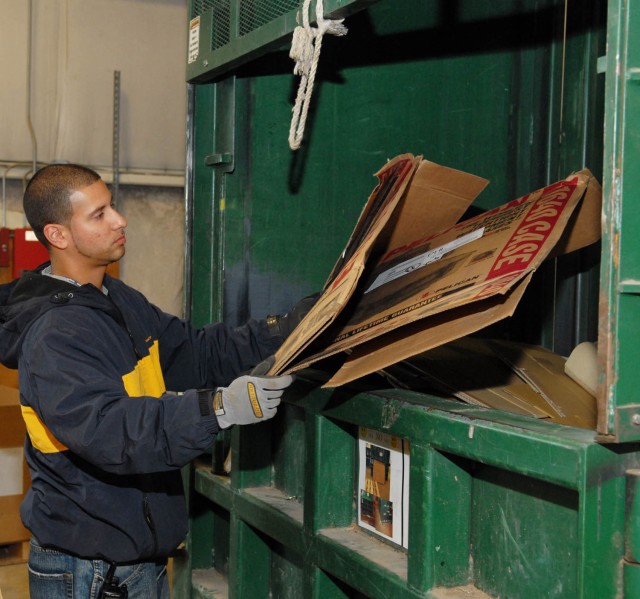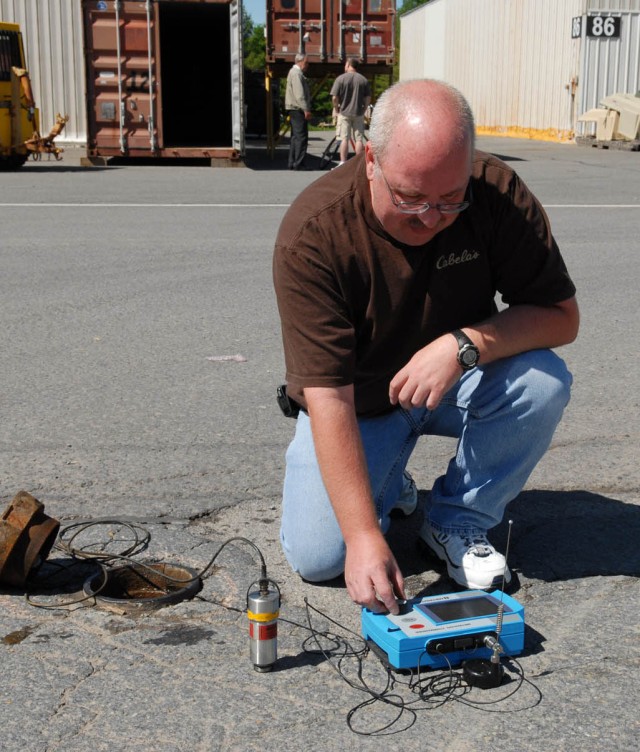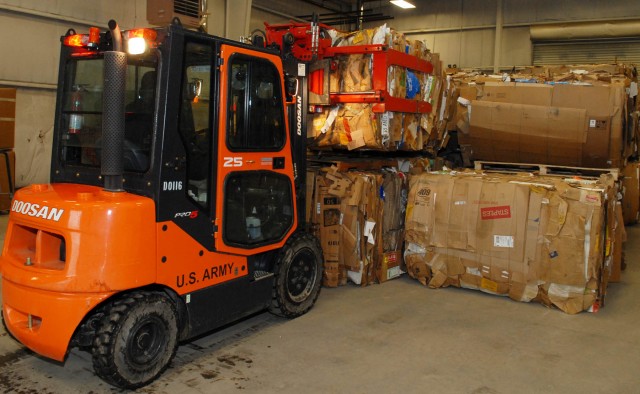Tobyhanna Army Depot isn't content to rest on its laurels. In fact, if depot leadership and tenants can find a way, it is likely they will repurpose, recycle or recover to help achieve their installation's sustainability goals.
A robust recycling program, sustainable building initiatives and energy recovery equipment have enabled the depot to conserve dollars as they meet environmental management system objectives. These initiatives have also garnered recognition for the Department of Defense's largest full-service electronics maintenance facility.
Because of Tobyhanna Army Depot's dedication to maintaining or exceeding environmental objectives, Tobyhanna recently won the industrial installation category of the Secretary of the Army's Environmental Awards Program for fiscal year 2010. Now the installation's nomination is being reviewed by another panel of judges as they represent the Army, in a competition against other services, for the Secretary of Defense Environmental Awards.
"Tobyhanna Army Depot has an unparalleled record of success and service," said Col. Charles C. Gibson, depot commander. "We do not rest on that record; rather, we constantly adapt, innovate and modernize, looking for continuous improvements in our programs with a careful eye trained on how what we do impacts our environment."
All Tobyhanna tenants do their part to make the depot more sustainable by participating in the installation's recycling program, which incorporates every-day practices to conserve natural resources, protect the environment and reduce costs. Through these efforts, the depot conserved more than 100,000 cubic yards of landfill space in fiscal year 2009.
That year the depot recycled 5.8 million pounds, resulting in $1.4 million in sales and a cost avoidance of $440,000. Similar efforts in fiscal year 2010 yielded $1.2 million in sales and $450,000 cost avoidance for 5.6 million pounds of recycled material.
With a recycle rate of 52 percent in fiscal year 2009 and 58 percent in fiscal year 2010, Tobyhanna Army Depot already is exceeding DoD recycling-rate goals set for fiscal year 2015. Plus, the increased recycle-rate percentage, despite a lower volume shows tenants are also reducing the overall amount of waste being generated at the facility. Still, the depot continues to improve its recycling process and increase the list of recyclable materials.
Along with its recycling successes, Tobyhanna Army Depot is reducing environmental impacts and enhancing employee quality of life through implementation of environmentally-friendly construction projects. The depot has four construction projects that incorporate sustainable features and practices.
In fiscal year 2010, Depot employees endured a record-breaking summer with many days exceeding 90 degrees Fahrenheit. However, thanks to installation of 61,288 square feet of green roof in fall 2009, inhabitants of non-air conditioned buildings were shielded from much of the heat-related discomfort.
Other depot construction projects include improved water efficiency, reduced energy consumption, use of recycled materials, use of regional materials and reduced construction waste, as buildings are certified according to U.S. Green Building Council standards for Leadership in Energy and Environmental Design, commonly referred to as LEED.
In addition to LEED certification, the depot has set objectives through their ISO 14001 environmental management system to reduce the release of toxic substances, hazardous waste generation, and energy usage, as well as other sustainability goals.
A Tobyhanna team conducted a lean-value-stream analysis on the Depot's hazardous material turn-in processes. To help ensure hazardous materials are disposed of properly, the depot policy calls for turn-in of all hazardous material containers after use, whether empty, unusable, or no longer needed for frequent use. The depot's turn-in rate for hazardous material increased from 24 to 77 percent.
"Our new Depot "Maintenance of the Future Facility" is our test bed for advanced maintenance processes and techniques, accomplished in an employee-friendly and environmentally-advanced work environment," said Gibson. "We understand the need to balance our taking care of employees with taking care of the environment; and do both very well," he said.
All these efforts have secured the Tobyhanna Army Depot, not only the Secretary of the Army Environmental Award, but a strong reputation for industrial environmental quality excellence that matches their already stellar reputation as the center for industrial and technical excellence in electronics.












Social Sharing